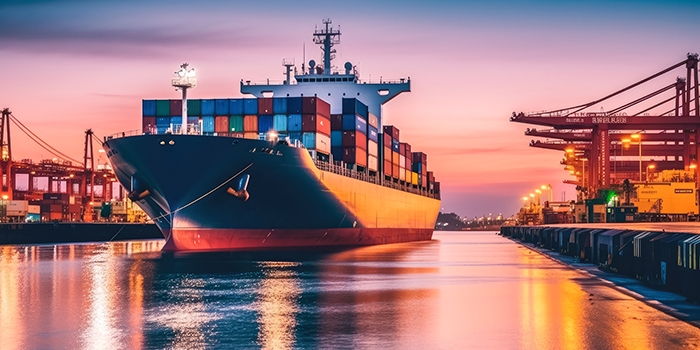Maritime Challenges: Riding Out The Storm
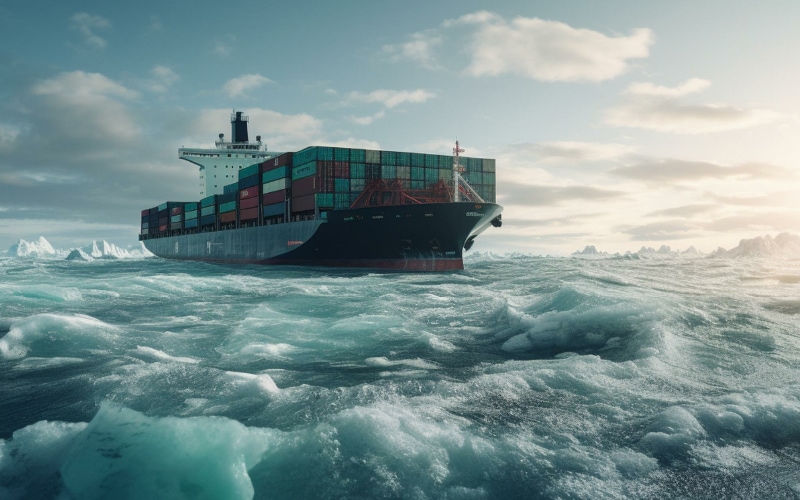
From rising seas to rises in crime, critical issues confront ports, shipping lines, and their shipper customers. Find out how they navigate the turbulence and uncertainty.
Container ships no longer line up 50 deep and wait days to access berths in major U.S. ports. But capacity remains a concern, along with other important challenges: how to stay resilient in the face of climate change, how to reduce the harm that shipping operations do to the environment, and how to combat the growing problem of cargo theft near ports.
Here’s a look at some big concerns that ports, ocean carriers, and shippers contend with, and some solutions they rely on to keep operations efficient, safe, responsible, and secure.
Infrastructure Upgrades
The Port of Virginia welcomes some of the world’s largest cargo ships—ultra-large container vessels (ULCVs) that can carry 14,501 or more 20-foot equivalent units (TEUs). But when one of those super vessels arrives or departs, it delays other traffic.
“We have to shut the channel down for four hours while they transit,” says Joseph Harris, senior director of communications at the Port of Virginia.
Soon, though, the port expects to support unrestricted two-way movement of fully laden ULCVs and other vessels, thanks to a $450-million project to deepen and widen its shipping channels. Dredging in the Thimble Shoal West Channel will take that waterway from 50 to 55 feet by the end of 2023.
The port expects to complete a similar project in the Thimble Shoal East Channel by spring 2024 that will widen certain areas up to 1,400 feet.
These improvements will let the Port of Virginia accommodate fully laden ULCVs even at low tide. That will make Virginia an even better candidate to be the first port a vessel calls in North America or the last port it calls before an outbound crossing, Harris says.
Containers will also speed up operations in the terminals. “We’ll be able to keep the berths busy, because we won’t be waiting on a ship to arrive or the channel to reopen,” Harris says.
The dredging project is part of Virginia’s $1.4-billion Gateway Investment Program, announced in 2022. As part of that initiative, the port is expanding its Central Rail Yard at Norfolk International Terminal (NIT) to increase the number of TEUs it can handle per year by 455,000. In addition, the port is renovating, expanding, and implementing new technology at NIT’s North Terminal, allowing it to handle 1.4 million TEUs per year.
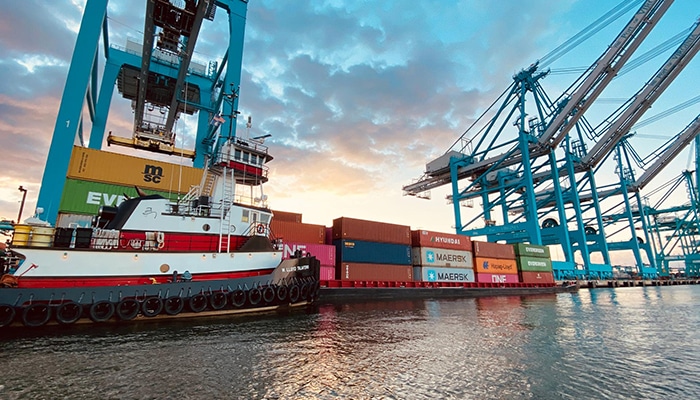
As it continues to handle record cargo volumes, the Port of Virginia continues its infrastructure investments with both long- and short-term projects aimed at driving efficiency, preparing for the future, and capturing more cargo.
GPA Boosts Capacity
The Georgia Ports Authority (GPA) is also upgrading infrastructure to improve capacity and efficiency. For instance, recent improvements to Berth 1 at the Garden City Terminal, finished in July 2023, boost annual capacity there from 6 million TEUs to 7.5 million.
“The additional space, coupled with the largest ship-to-shore cranes on the U.S. East Coast, mean faster service for container cargo, faster turn times for ships, and quicker access to goods for beneficial cargo owners,” says Bruce Kuzma, vice president of trade development, ocean carrier and non-container sales at the GPA.
Two other projects will give the GPA even more space for containers. At the Port of Savannah’s Ocean Terminal, renovation will increase annual capacity from 250,000 TEUs to 2 million TEUs by the end of the project’s second phase in 2026. The GPA will also add eight new cranes to that facility.
And by the end of 2023, the Garden City Terminal (GCT) West will have added 100 new acres of long-term storage, an 11-lane truck gate, and a direct connection to the main container yard, says Chris Novack, vice president of engineering and facilities maintenance.
The expanded facility will let domestic producers store outgoing containers before a vessel’s departure date without transporting them twice. When the time comes, GPA workers will transfer the containers from GCT West to the marine terminal.
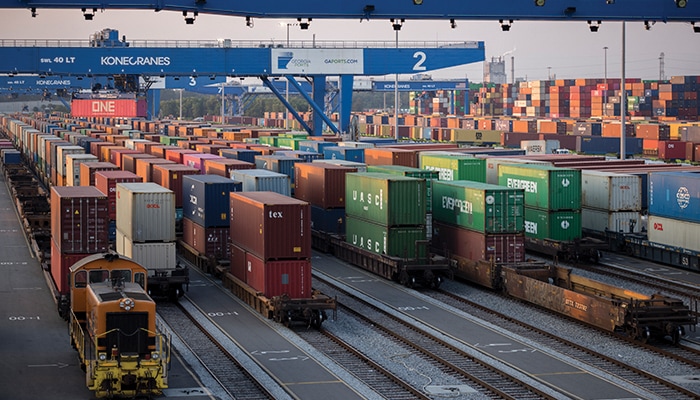
Infrastructure improvements at the Port of Savannah include Mason Mega Rail, which increases the number of working tracks from eight to 18, adds 97,000 feet of new rail at Garden City Terminal, and doubles the port’s rail lift capacity to 1 million containers per year.
Cutting Costs
“This system will cut transportation and storage costs while reducing carbon emissions related to truck transit,” says Flavio Batista, the port’s vice president of sales and marketing. “The yard will allow importers greater flexibility for long-term storage of retail goods or manufacturing components until they are needed, without having to pay demurrage.”
As they expand, ports are also reworking facilities to better withstand the effects of climate change.
“For example, the Port of Olympia, Washington, conducted a study on its susceptibility to sea water rise,” says Eleanor Kirtley, senior programming manager at Green Marine, an environmental certification program for the maritime industry. “The port is on tide flats, so it is important to consider which of its shore-side infrastructure would be at risk. What type of investment would be necessary to shore that up?”
In south Florida, Port Everglades is already addressing resilience, using a $32-million grant from the Florida Department of Environmental Protection to replace bulkheads in one section of the port. The goal is to protect operations as the sea rises by as much as 4.5 feet between now and 2095, and also to protect against storm surges.
The new bulkheads will be thick enough to resist the force of water from higher seas and bigger storms. They also feature cap walls that the port can raise a total of six feet over time, in two-foot increments.
Without that additional height, a vessel arriving at the port on a higher sea might suffer damage as it meets the bulkhead. “The vessel might not adequately touch the number of fenders necessary for the size of the ship,” says J. David Anderton II, the port’s assistant director, who oversees seaport planning and development. The ship could even get caught in the fenders.
Taller, stronger bulkheads will also protect the port against damage that can occur when a surge forces sea water into the port’s storm drainage system. “You end up with overtopping flooding that disrupts operations and can actually penetrate into the underground electrical system,” says Jonathan Daniels, CEO and port director at Port Everglades.
The current bulkhead replacement project is the first in a proposed series of improvements. “We’re applying again for the same grant this year,” Anderton says.
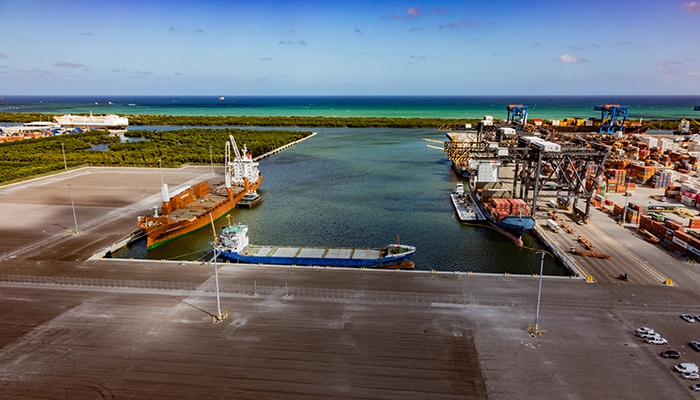
Port Everglades is extending its Southport Turning Notch to the west to create a new cargo berthing area. Among other enhancements, the project consists of landside infrastructure improvements to support the acquisition of six additional Super Post-Panamax gantry cranes.
Protect the Planet
While reducing the risks posed by climate change, ports are also trying to reduce the harm their operations inflict on the environment.
For instance, Port Everglades is installing a shore power system in its eight cruise terminals. When that’s complete, berthed cruise ships will be able to plug into the shore side electrical system, rather than use their own fuel-burning generators.
“We are talking with carriers and terminal operators about installing shore power systems associated with cargo ships as well,” Daniels says.
When the port removed eight acres of mangroves during its recent Southport Turning Notch extension project, it replaced them with more than 16 acres of mangroves on undeveloped land. “Part of that design also included manatee nursery areas,” Daniels says.
In addition, the port relocated about 900 corals from an old bulkhead in the project area to an artificial reef in another location.
Port Everglades, like many other ports, terminal operators, and ship owners in North America, participates in Green Marine’s certification program, whose goal is to improve environmental performance with steps that exceed government requirements.
Founded in 2007 with a bi-national focus on the Great Lakes and Saint Lawrence Seaway, Green Marine is headquartered in Quebec City. It operates a satellite office near Halifax, and another office in Seattle, where Kirtley is based.
Green Marine outlines steps members can take to improve their performance in a variety of areas, such as greenhouse gas emissions, pollutants, underwater noise, spill prevention and storm water management, and impact on aquatic ecosystems. Members work on performance indicators each year, evaluate their own progress, and submit every two years to third-party verification.
Which indicators a member focuses its efforts on depends on its own activities and the needs in its region. For example, in the Puget Sound region, there’s a lot of concern for the well-being of the endangered Southern Resident orcas. “So performance indicators related to underwater noise get a lot of attention,” says Kirtley.
For many members, reducing greenhouse gas emissions is a big priority. Green Marine tries to offer innovative tactics members can use while remaining competitive in their industries.
“For example, for ship owners with greenhouse gases, we added criteria that recognize alternative fuels, taking on an energy audit, and having a low-carbon vessel,” Kirtley says.
Highway Robbery
One problem that isn’t a major worry these days is large-scale cargo theft on port property. “The ports are pretty secure,” says Scott Cornell, transportation lead and crime and theft specialist with Travelers’ inland marine insurance business. He cites federal requirements to bar unauthorized visitors. Thieves sometimes pilfer small amounts of cargo, but usually not entire loads.
Just outside the ports, however, it’s another story. “Cargo theft is at a 10-year high; it’s up more than 50% year-to-date,” says Cornell, drawing on data from CargoNet, a provider of cargo theft prevention and recovery solutions based in Jersey City, New Jersey.
One well-publicized victim of that crime wave is Nike. In June 2023, Los Angeles police found millions of dollars worth of stolen Nike sneakers during a raid on a warehouse in Torrance, California. Police said the shoes most likely came from several trucks that were stolen from near the Port of Los Angeles.
Like that crime, a great deal of cargo theft occurs within 50 miles of major ports. It come in two varieties. The most common is straight theft, when criminals steal a partial load, a whole trailer or container, or an entire tractor-trailer from a drop lot, truck stop, distribution center, or other facility.
The second is strategic theft, in which thieves waylay freight through deceit. “They do that through identity theft, fictitious pickups, or double-brokering scams,” says Cornell. “That kind of theft is up more than 1,300%.”
Cornell recommends a three-layered approach to combating cargo theft. The first is to implement smart policies and procedures. For instance, a driver should not pick up a load from a port, storage yard or other location, and then visit a truck stop to fuel up, eat, and rest before hitting the road.
That’s because thieves often follow tractor-trailers from pickup points to nearby truck stops, and then steal the load while the driver is otherwise occupied. It’s better to visit the truck stop before making the pickup.
“Then the driver can travel 150 or 250 miles without stopping,” Cornell says. Thieves will stay behind, looking for easier prey.
The second strategic layer involves the use of hard locking devices on trailers and containers. The third uses tracking technology installed in the cargo, or on the trailer or chassis, perhaps paired with geofencing software to send an alert when a load goes astray.
If that technology detects a theft in progress, it’s important to respond fast. “After the first 24 to 48 hours, the chances of recovery drop by at least half,” Cornell says.
Stay Prepared
It’s also important to prepare your response long before a crime occurs. The first step should always be to call 911.
“But after that, determine what resources are available to you,” Cornell suggests. “Who is going to pick up the phone at 2 a.m. and help you recover that load? You have to plan for those situations in advance.”
Video Intelligence
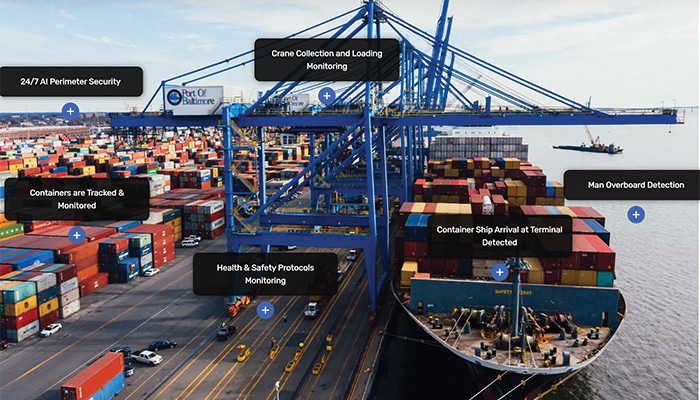
Video technology and artificial intelligence can help ocean ports and their supply chain partners enhance performance in a range of areas, according to a company called Toren AI. The firm announced in August 2023 that, after serving the government market since 2021, it will now offer solutions for commercial operations as well.
Toren AI’s technology uses artificial intelligence to extract information from a facility’s existing video cameras at a rate, and at a level of detail, that’s not possible for human observers. Users specify the kinds of activity they want to look for.
Are stevedores or crane operators violating safety procedures? “Cameras with AI technology can automatically identify and alert workers to those kinds of health and safety hazards,” says Logan Dopp, co-founder and CEO of the company, which is based in Washington, D.C.
Is somebody possibly up to no good? “The camera equipment has the ability to identify people who are in areas during hours they shouldn’t be,” Dopp says. Or the software can send an alert any time it detects a pair of bolt cutters. An ocean carrier might use the system to enhance its security camera network, helping it meet the requirements of the U.S. government’s Customs Trade Partnership Against Terrorism (CTPAT) program.
A port, terminal, or warehouse might also use the technology to identify operational bottlenecks. Analyzing a video feed from one marine terminal, for example, the AI found that some trucks were entering through a lane that was supposed to be an exit, causing slowdowns.
“The whole distribution supply chain would be ideal users of this kind of technology,” Dopp says.
Shippers Have a Secret Negotiation Weapon
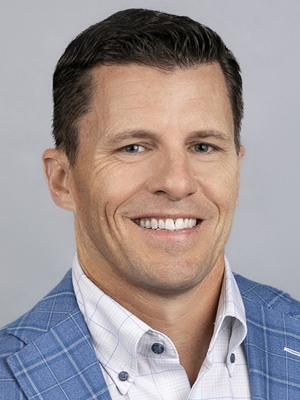 By: Phillip Ousley, Co-founder & President, ASF Global Logistics
By: Phillip Ousley, Co-founder & President, ASF Global Logistics
Importers have several options when negotiating rates with NVOCCs (non-vessel-operating common carriers), such as yearly or quarterly contract rates, spot rates, or hybrid contract/spot models. No matter what form these agreements take, relationships should be established long before it’s time for contract negotiations. Establishing strong NVOCC partnerships through collaborative planning, open dialogue and respect builds a solid foundation for negotiations and optimal year-round interactions.
You’ll find that when market conditions change, and they always do, there’s a significant benefit to having a deep-rooted, trusted partnership with your NVO, as they offer a high level of expertise, dedicated support, and customer care.
As specialists in global logistics and transportation services, NVOs provide cost-effective pricing due to bulk-volume contracts, and flexible, multi-carrier service options. NVOs have established long-term carrier relationships, with guaranteed space and competitive rates, that provide reliable, cost-effective service alternatives.
A forwarder/NVOCC’s job is to work closely with shipper customers to understand their supply chain needs and strategy. Through this personalized, true partnership approach, a forwarder/NVO then serves as the link to ocean carriers, regularly providing updated cargo volume forecasts and accurate customer documentation. This helps carriers with one of their most important operational tasks: effectively planning space and equipment allocations.
At the most basic level, shipper, NVO, and carrier relationships mutually need trust and predictability. Importers need the equipment and space they book and carriers need to know that cargo will show up on the docks as expected. Strong, trusted business relationships help alleviate mishaps that cause operational problems for all parties.
Accountability and honesty in these relations ensure a mutually beneficial approach that supplies a strong foundation for constructive negotiations that provide guaranteed space and competitive rates to reduce business risk. Managing freight rate volatility will be eased when open, informed discussions occur due to these meaningful relationships.
In addition, shippers and their NVO partners that have established a loyal and stable long-term business relationship with ocean carriers will find that their cargo is prioritized for loading on a ship when cargo is being rolled. Rolling cargo occurs when a vessel runs out of capacity resulting in a shipment not being loaded onto the vessel it was scheduled to sail on.
The crux of successful negotiations lies in forging robust partnerships long before negotiations begin. The essence of collaboration, transparency, and respect lays a strong groundwork for year-round interactions. As market dynamics inevitably shift, the value of well-established, trusted relationships becomes apparent. Importers must understand that pushing carriers into corners, or forcing down rates, may seem like a winning mentality, but is likely a short-term win leading to a long-term loss.
With accountability and honesty at the forefront, negotiations take on a constructive tone, paving the way for guaranteed space, competitive rates, and a fortified global supply chain. In this dynamic industry, the power of partnership in shaping resilience, stability, and effective dialogue cannot be overstated.
